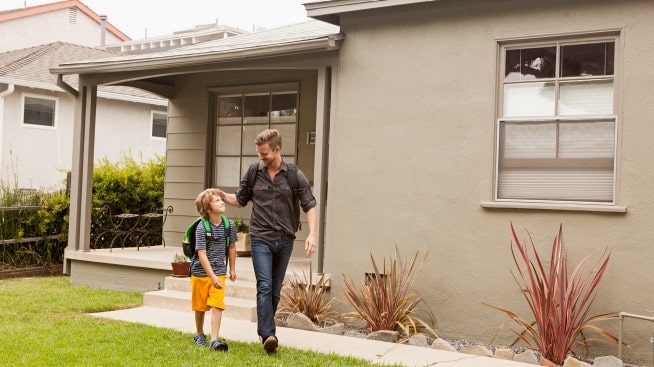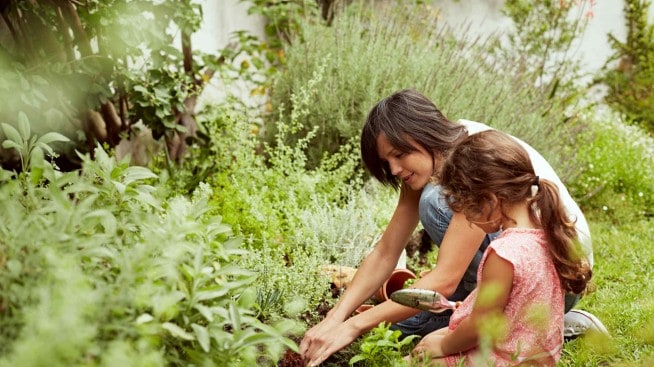Mountain homes: Pros and cons, types, and how to find one

Packing it up and moving to a remote area in the mountains is something many people may have dreamed about at some point in their lives. Living among snow-capped peaks, cheerful mountain bluebirds and lush evergreens sounds pretty picturesque. It’s no wonder homes in these areas are popular options for a second home or an investment property, especially for those who love skiing and other winter sports. If you’ve ever fantasized about mountain homes, there are some pros, cons and special considerations to keep in mind before taking a high-altitude hike into this type of home ownership.
Pros and cons of mountain homes
Whether you’re living in a city, the suburbs or a remote desert town, there are generally pros and cons that are unique to that locale. These pluses and minuses may be weighted differently depending on your personal priorities and needs. Living tucked away in the mountains is no exception.
Pros of mountain homes
- Privacy: If you’re someone who values their privacy and would prefer your neighbors out of sight, mountain living may be for you. While there are mountain homes in busier ski areas, it’s very possible to find a cozy spot away from any hustle and bustle.
- Scenic views: Walking outside your door and immediately being met with a gorgeous view is something many people aspire to. Many a mountainside house will offer this type of natural eye candy, sometimes even a 360-degree view of some idyllic alpine scenery.
- Architecture: Mountain homes come in different shapes and sizes, from quaint cabins to modern Craftsman-style bungalows. Some of these designs are even specifically designed to withstand mountainous conditions.
- Exercise and outdoor activities: One reason people flock to the mountains is the proximity to outdoor activities. Whether it’s winter or summer, there are plenty of fun and healthy activities to indulge in, from skiing, snowshoeing and cruising in a snowmobile, to hiking, fishing, bird watching and rock climbing. If you enjoy the great outdoors, there’s probably an appropriate activity for you.
- Health: Besides having easy access to healthy exercise and outdoor activities, living in the mountains also provides you the health benefits of generally cleaner, fresher air than cities might have, ample sunlight and the lower stress levels that come with living in a tranquil environment.
Cons of mountain homes
- Isolation: Privacy does have its perks, but the isolation of mountain living isn’t for everyone. Residents may end up feeling lonely if there’s a lack of community spaces or events nearby.
- Slower emergency response times: If your mountainside house is far from hospitals and other emergency services, like fire departments, you could experience slower-than-normal emergency response times. This may be a concern for elderly retirees or people who live in areas prone to natural disasters or extreme weather.
- Weather: Homes in the mountains may be more susceptible to heavy snowfall, strong winds, cold temperatures and icy conditions. This could make transportation difficult and might mean your home requires a bit of extra maintenance. At the very least, winterizing the building will probably be in order.
- Distance from services and amenities: In urban or suburban areas, grocery, hardware and drug stores are often a short distance away. If you live in a more rural mountain area, you may have to travel a greater distance for essentials.
Types of mountain homes
Before you start seriously looking for your alpine dream house, it may be a good idea to familiarize yourself with some of the more typical styles of mountain homes.
- Log cabins: Rustic cabins made of stacked logs are a quintessential type of mountain style house. They generally feature a pitched roof, which is ideal for shedding any build-up of snow, ice or rain. Log cabins offer a sort of quaint, cozy, historical aesthetic and come in many sizes, from tiny one-room abodes to larger homes with multiple bedrooms and spacious open common areas.
- A-frames: Like log cabins, A-frame houses have pitched roofs that are suited for areas that see a lot of snow. With their big windows, A-frame homes generally offer stunning views, especially when you’re living in the mountains.
- Mountain modern: These homes offer a combination of the sleek lines of modern architecture and harmony with natural surroundings. With modern mountain homes, think big windows, flat or pitched roofs, open floorplans and thoughtful integration with the landscape.
- Lodge: Lodge-style homes look similar to the classic ski lodges you might see in movies. These rustic abodes usually utilize wood and stone, which complement the natural landscape of mountainous regions.
- Chalet: Somewhat similar to a lodge, chalets are another rustic-looking example of a mountain style house. Like most mountain homes, chalets feature pitched roofs and large windows. Chalets tend to be a bit larger than A-frames, log cabins and modern mountain homes, and often feature balconies or terraces.
- Stone cottages: Stone offers plenty of rustic aesthetic appeal, and its durability makes it well-suited for the elements that come with living in the mountains. Like many other mountain homes, these structures usually feature pitched roofs and cozy interiors.
Finding a mountain house
Once you know for certain that mountain life is right for you, you may be wondering how to go about finding a mountain home. Whether you’re searching for cute, rustic cabins or sleek, modern mountain homes, there are a few ways to find your alpine dream home:
- Vacation in desirable mountain areas: One way to find your future home is by vacationing in some of the mountain areas that are appealing to you. Driving through these prospective neighborhoods could give you an idea of what to expect and playing house in a short-term rental might help you understand what you like — or don’t like — about mountain homes and living.
- Use a real estate agent: If you’ve got an idea of where you’d like to live, consider contacting local real estate agents. They may be able to match you with homes that are for sale and clue you in to some of the pros and cons of the specific locales.
- Online listings and virtual tours: Looking for a mountain home from a distance? You can utilize the internet. There are plenty of real estate listings to be found online, and the growing popularity of virtual tours means it’s easier than ever to view homes you can’t get to at a moment’s notice.
- Word of mouth: Another way to find the perfect mountain area and home for you is through word of mouth. If you know people with homes in the mountains or belong to social networking sites with local groups, try talking to them about their experiences and any vacancies in their area. They may be able to help you make a more informed decision about your future.
In summary
Owning a home in a place as naturally beautiful as the mountains is an understandable goal. That said, even an idyllic locale like a pristine mountainside comes with its own unique considerations. Fresh air, gorgeous landscape and proximity to outdoor activities are all wonderful perks but owning a home in the mountains means being prepared for the possibility of extreme weather and varying types of isolation. Being aware of the pros and cons that come with mountain homes may help you make a life choice you can be happy with for years to come.
Mountain homes: FAQs
1. Do mountain homes require additional maintenance?
Yes, mountain homes generally require additional maintenance. Mountainous areas may be more prone to extreme weather like heavy snow or ice storms. This type of exposure to the elements may mean more frequent repairs and winterizing.
2. In what regions are mountain houses most common?
Mountain houses can be found in many parts of the U.S., from the Catskills to Aspen and beyond. While mountain-style homes may be more popular in areas where skiing is possible, you can find them in pretty much any area with mountains, big or small.
3. Are mountain homes well-suited for families?
This really depends on the family and whether the mountain home will be a primary residence or a second home. While active families may relish the proximity to ski slopes, hiking and whitewater rafting, mountain living may mean being further away from schools and neighbors. This may make it a bit socially isolating for families with young children or teenagers.



